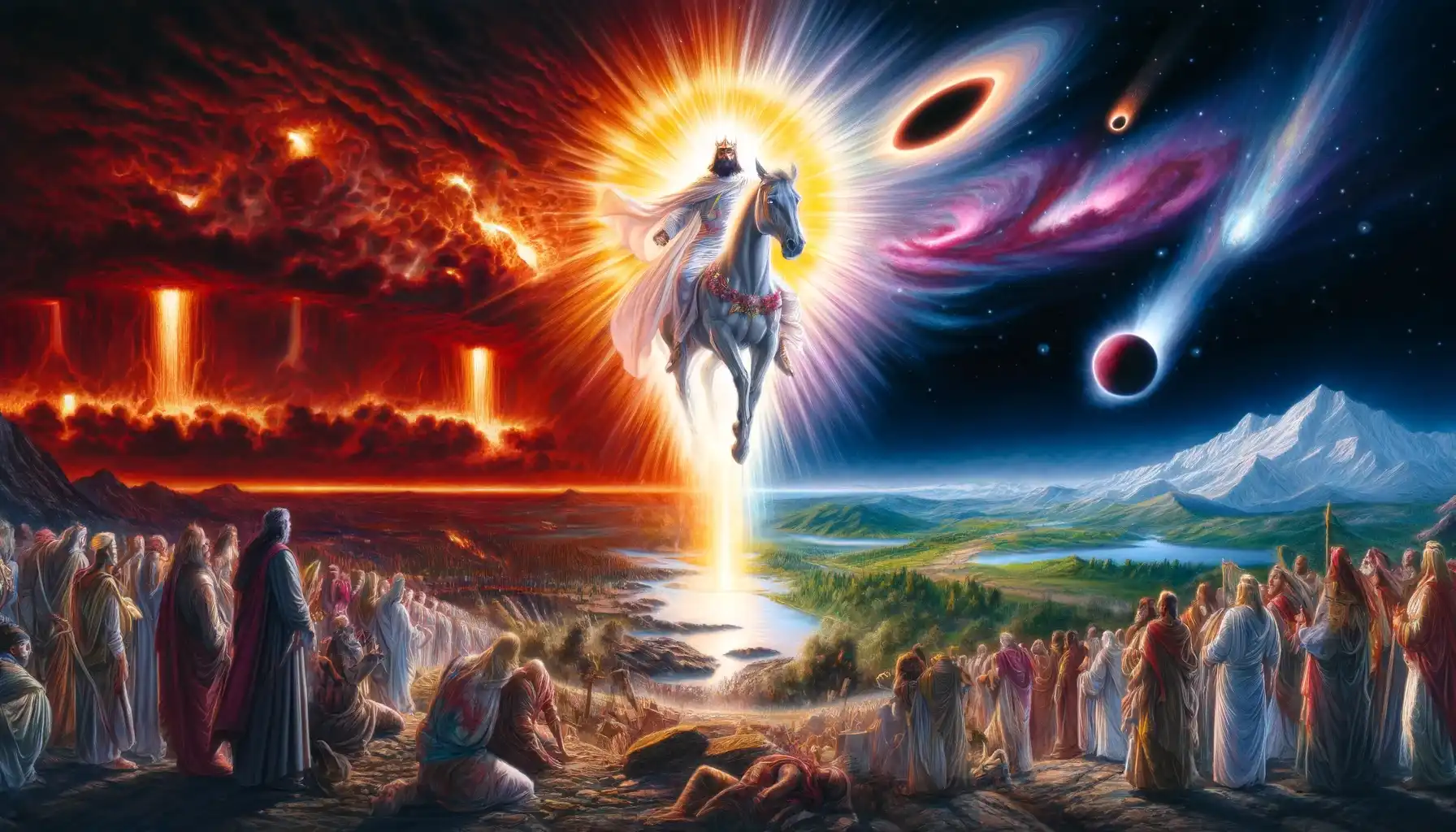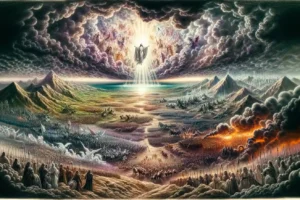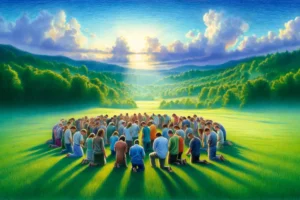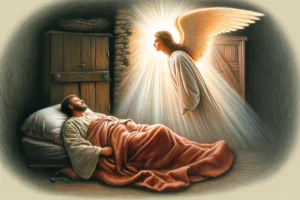
Second Coming of Christ
The Second Coming of Christ is a pivotal event in Christian eschatology, vividly described in Matthew 24:27-31 and Revelation 19:11-16. This event is anticipated as the triumphant return of Jesus Christ to Earth, culminating in the final judgment and the establishment of God’s kingdom.
Quick Facts about the Second Coming of Christ:
- Sudden and Universal: Matthew 24:27 states that Christ’s return will be as evident as lightning that flashes across the sky, visible from east to west, signifying its suddenness and universality.
- Gathering of the Elect: Verses 30-31 in Matthew 24 describe the Son of Man appearing in the sky, followed by the mourning of all the peoples of Earth and the gathering of the elect from the four winds, from one end of the heavens to the other, signifying a gathering of believers.
- Heavenly Signs: These verses also mention cosmic disturbances—such as the darkening of the sun and moon and the falling of stars—that will accompany Christ’s return, symbolizing the profound impact of this event on the natural order.
- Triumphant Return: Revelation 19:11-16 portrays Jesus as a divine warrior, riding a white horse, symbolizing victory. He is described as having eyes like blazing fire, with many crowns, clothed in a robe dipped in blood, emphasizing His authority and readiness for battle against evil.
- Word of God: In Revelation 19, Jesus is depicted bearing a name written that no one knows but He Himself, called “The Word of God,” highlighting His divine nature and the fulfillment of God’s promises through Him.
- Defeat of Evil: This passage also details the defeat of the beast and the false prophet, representing the ultimate triumph over evil and the establishment of divine justice and righteousness.
- King of Kings: Christ is titled “King of Kings and Lord of Lords” in Revelation 19, underscoring His supreme authority over all earthly and heavenly rulers.
The Second Coming of Christ, as prophesied in Matthew 24:27-31 and Revelation 19:11-16, represents a foundational doctrine within Christian eschatology, symbolizing the ultimate triumph of good over evil and the final establishment of God’s kingdom on Earth. This event is depicted with rich imagery and profound theological significance in these biblical passages. Here’s a comprehensive analysis of these descriptions:
Biblical Context and Interpretation
Matthew 24:27-31 forms part of what is known as the Olivet Discourse, where Jesus teaches about the end times and His eventual return. This discourse provides a prophetic and apocalyptic overview of what believers should expect as the age draws to a close.
Revelation 19:11-16 is part of the apocalyptic vision received by John, which includes detailed prophecies about the future events leading up to the final victory of Christ over Satan and his forces.
Symbolism and Imagery
- Visibility and Universality: Matthew 24:27 emphasizes the unmistakable and universal nature of Christ’s return, comparing it to lightning visible across the sky. This imagery signifies that Christ’s second coming will be undeniable and evident to all, unlike His first coming, which was in humility and largely unrecognized by the world.
- Cosmic Disturbances: The cosmic signs described in Matthew 24:29 (“the sun will be darkened, and the moon will not give its light; the stars will fall from the sky”) use apocalyptic language typical of Old Testament prophetic literature, symbolizing great upheaval and divine intervention in the order of creation.
- Divine Warrior: In Revelation 19:11-16, Christ is depicted as a divine warrior riding a white horse, which in biblical symbolism represents victory. His eyes are like blazing fire, and He wears many crowns, suggesting His supreme authority and omniscience. The robe dipped in blood may symbolize His sacrifice on the cross and His victory over sin.
Theological Themes
- Judgment and Redemption: Both passages convey themes of judgment against wickedness and redemption for the faithful. The gathering of the elect in Matthew 24:31 highlights the redemptive promise to those who have remained faithful to Christ’s teachings.
- Triumph of the Kingdom: Revelation 19 describes Jesus as the “King of Kings and Lord of Lords,” an affirmation of His ultimate authority and the establishment of His rule. This victory over the beast and the false prophet (Revelation 19:20) signifies the final overthrow of all evil powers that oppose God.
- Finality and Eternity: The Second Coming marks the end of human history as we know it and the beginning of an eternal state where God dwells with His people in a restored creation.
Conclusion
The Second Coming of Christ is rich in symbolic content and deep theological significance. It is not just an event of future anticipation but serves as a catalyst for ethical living and spiritual readiness among Christians. Matthew 24 and Revelation 19 collectively underscore the certainty of Christ’s return, the importance of preparedness, and the ultimate hope for believers—eternal life in the presence of God, free from sin and suffering. This doctrine encourages vigilance, faithfulness, and comfort among believers, anchoring their faith in the promise of Jesus’ triumphant return and the fulfillment of God’s redemptive plan.



